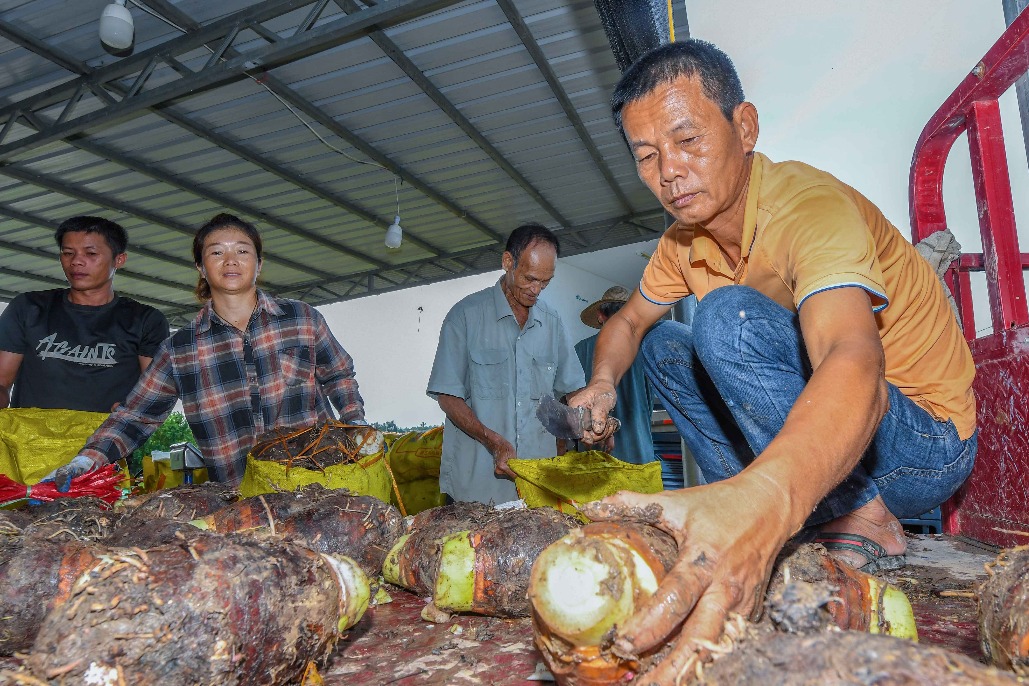Intl giant panda conservation cooperation to build on successes


The National Forestry and Grassland Administration said that through the efforts of scientists, the captive giant panda population has grown from less than 100 in the early 1980s to 728 as of the end of last year. The expansion of the captive population has provided conditions for the reintroduction and support of wild panda populations, serving as another goal of translocation conservation.
Wei Rongping, a senior engineer at the giant panda center, said, "China initiated the study of introducing captive giant pandas to the wild and training in 2003, and has successively released 12 captive individuals after rewilding training, with 10 surviving at present."
In addition to introducing captive giant pandas to the wild, panda centers also rescue sick and injured pandas from the wild, along with abandoned cubs. Those pandas that recover and demonstrate the ability to survive independently are then reintroduced to the wild.
Pandas that are not capable of surviving in the wild will continue to be cared for at panda centers, typically due to advanced age. Currently, there are 11 pandas rescued from the wild living in panda centers, with eight being elderly pandas, the oldest being 32 years old, according to the National Forestry and Grassland Administration.
In China, the protected area for giant panda habitats has been expanded from 1.39 million hectares in the 1980s to 2.58 million hectares, with the population of wild giant pandas growing from around 1,100 in the 1980s to nearly 1,900 this year.
In 2016, the International Union for the Conservation of Nature downgraded the threat level of giant pandas from endangered to vulnerable, reflecting the success of China's giant panda conservation efforts, which have been recognized by the international wildlife conservation community, and serving as an acknowledgment of China's dedication to these efforts.
Liu Yuliang, a researcher at the animal protection research department of the Chengdu Research Base of Giant Panda Breeding, said, "While significant progress has been made in giant panda conservation, there are still many key technical issues to be addressed in panda disease prevention and treatment, protection of wild habitats and the construction of giant panda national parks."
Since the 1960s, China has established 67 nature reserves with giant pandas and their habitats as the primary focus of protection.
Professor Liu Xuehua from the School of Environment of Tsinghua University, reiterated that international cooperation has played a crucial role in conservation efforts.
"The international conservation funds raised during giant panda international cooperation projects played a positive role in the early stages of wildlife conservation in China when funds were severely lacking," Liu said.
"It effectively promoted the establishment of giant panda conservation areas in China, particularly accelerating the construction pace of non-national giant panda conservation areas, and promoted the protection and restoration of giant panda wild populations and habitats."
The Giant Panda National Park, launched in 2021 with an area of 2.2 million hectares, about 2.5 times the size of Yellowstone National Park, covers the 70 percent of wild giant panda habitats, spreading through the provinces of Sichuan, Shaanxi and Gansu.
The national park connects 13 local populations through ecological corridors.
In Sichuan province alone, there are more than 7,800 infrared camera monitoring points set up, having collected over 7.3 million pieces of data, according to the Sichuan forestry and grassland bureau.
Chen Zongqian, deputy director of the bureau, said, "We have recorded 32 instances of giant panda activity in key ecological corridor restoration areas such as Tuowu Mountain, Niba Mountain and Erlang Mountain. The number of giant pandas in these priority areas has increased by 50, and the annual encounter rate of wild giant pandas has risen from 178 to 185."
Xu Weihua, vice-president of the Institute for National Parks, said the Giant Panda National Park is home to approximately 1,340 wild giant pandas and provides a habitat for over 8,000 other wildlife species such as Sichuan snub-nosed monkeys, snow leopards and dove trees.
- Nation's health outcomes gain recognition
- Sichuan's ethnic festival attracts thousands of tourists
- SCO Digital Economy University Alliance launched
- Experience from a first-person perspective a sniper shooting from a boat
- Humble root crop becomes vital industry in Haikou village
- Sniper showdown on water: Realistic battlefield simulation





































